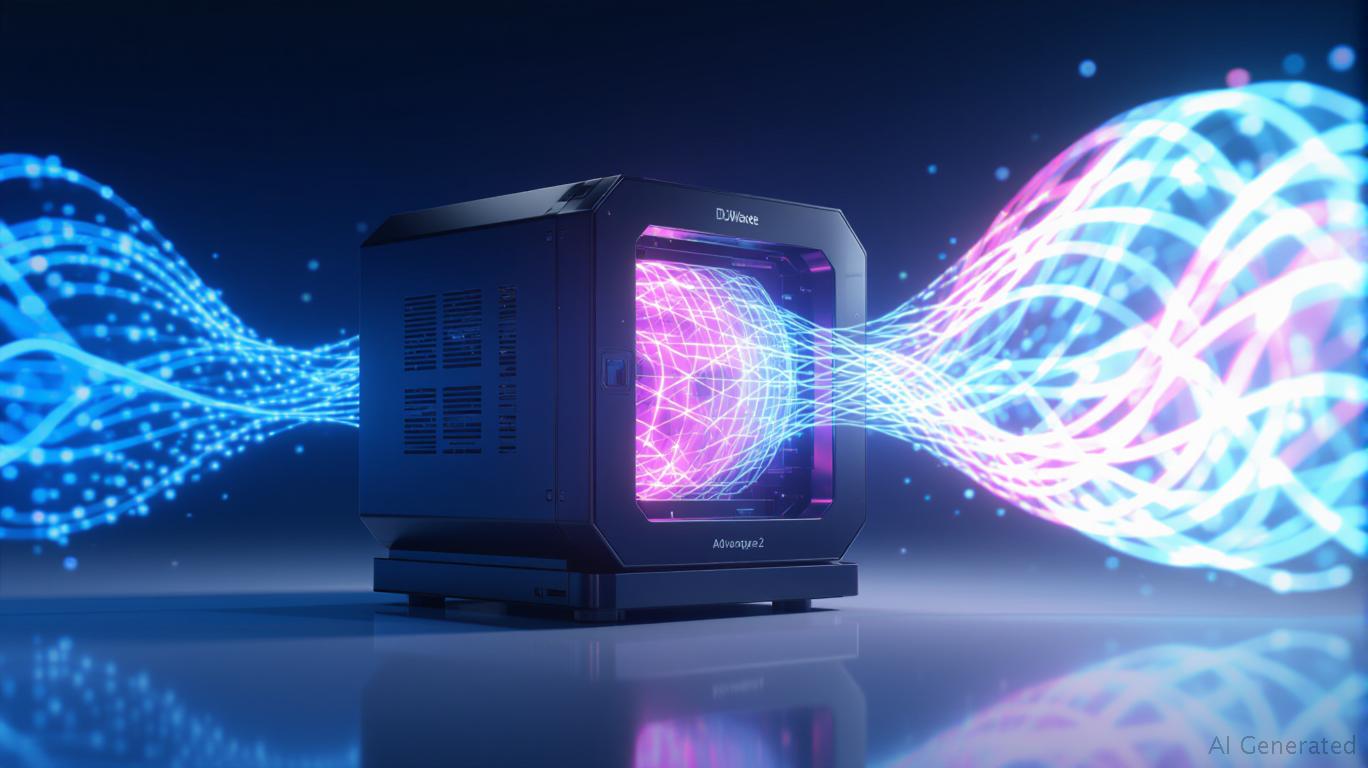D-Wave Quantum (QBTS): Niche Player or Future Leader in the Quantum Computing Race?
The
race is heating up, with giants like and vying for dominance while smaller players like (QBTS) scramble to carve out a sustainable niche. As gate-based systems edge closer to fault tolerance and universal algorithms, the question looms: Can D-Wave's proprietary annealing technology remain relevant, or is its future increasingly at risk? This analysis examines QBTS's financial trajectory, competitive dynamics, and valuation to assess its long-term viability.
Financial Performance: A Near-Term Boom, But Long-Term Uncertainties
D-Wave's first quarter of 2025 delivered a revenue surge of 509% year-over-year, fueled by the sale of its first full Advantage2 system to Germany's Jülich Supercomputing Centre for $12.2 million. This milestone signals a pivotal shift from renting access to outright ownership—a trend that could drive recurring revenue. Yet, QBTS's stock has fallen over 20% from its May 2025 peak, reflecting investor skepticism about its ability to compete with IBM and Google's broader technological ambitions.
Despite the revenue jump, QBTS's financials remain fragile. Its trailing twelve-month revenue as of 2024 was just $22 million, while its operating loss reached $71 million. The company relies heavily on equity financing, including a $400 million shelf registration for potential future offerings. While its cash reserves hit a record $304.3 million by March 2025—up from $178 million in December 2024—the burn rate for Q1 2025 was still $19.28 million in operating cash flow. This suggests
can fund operations for roughly 15–18 quarters at current burn levels, but further losses or delayed profitability could strain its liquidity.
Technology: Annealing's Strengths and Limits
D-Wave's quantum annealing systems excel at solving optimization problems—think logistics routing, drug discovery, or resource allocation—offering 99.9% sub-second response times. Clients like NTT Docomo (optimizing cell towers) and Japan Tobacco (drug discovery) validate its value proposition. However, annealing's narrow focus contrasts sharply with gate-based systems, which tackle broader applications like cryptography, quantum chemistry, and advanced AI.
IBM's Starling roadmap aims to deploy fault-tolerant quantum supercomputers by 2029, while Google's Willow chip has already achieved error rates enabling “below-threshold” scaling. These gate-based systems can execute algorithms (e.g., Shor's for factoring large numbers) that annealing cannot, opening vast markets. D-Wave's sixth-generation systems (Advantage2) and hybrid quantum-classical solutions offer incremental improvements, but they lack the fault tolerance critical for long-term scalability.
Market Positioning: Niche Leader or Laggard?
D-Wave's installed base spans 42 countries and includes enterprise contracts, giving it a defensive position in optimization-centric industries. Its Leap cloud service provides recurring revenue, but IBM and Google are integrating quantum into their AI and cloud ecosystems, offering broader platforms. Analysts warn that if gate-based systems achieve million-qubit thresholds with error correction by the late 2020s, D-Wave's niche could shrink.
QBTS's valuation also raises red flags. Its forward price-to-sales ratio (P/S) of 144.4X dwarfs sector peers, relying on speculative growth in quantum adoption. While its $304 million cash hoard buys time, dilution from equity raises (e.g., the $146 million ATM offering in Q1 2025) risks shareholder value.
Investment Thesis: Caution Amid Niche Opportunities
Near-term upside: QBTS's current revenue growth and proven use cases offer a defensive position. Its contracts with Fortune 500 firms and government entities signal demand for its specialized solutions.
Long-term risks: Gate-based systems threaten to erode D-Wave's edge. If IBM or Google achieve fault tolerance before QBTS can diversify its technology, its valuation could crater.
Recommendation: Investors should treat QBTS as a speculative play, with a focus on its near-term execution. Diversification into broader quantum leaders like IBM or
is prudent. QBTS's stock (currently around $5.38) trades at a 60% discount to its 12-month analyst price target of $8.63, but this assumes it can sustain revenue growth and avoid liquidity crises.Conclusion
D-Wave Quantum is a high-risk, high-reward bet on its annealing technology's staying power. While its current niche in optimization problems offers defensive advantages, the race to fault tolerance and universal algorithms could render its systems obsolete. For investors, QBTS's stock represents a gamble on timing: Can it monetize its installed base and partnerships before gate-based systems dominate? The answer may hinge on whether quantum computing's next decade rewards specialized players or consolidates behind all-purpose giants.
Final Take: Hold QBTS only if you believe its niche will endure long enough for broader commercialization. Otherwise, prioritize diversified exposure to quantum leaders like IBM and Google.
Sign up for free to continue reading
By continuing, I agree to the
Market Data Terms of Service and Privacy Statement

Comments
No comments yet